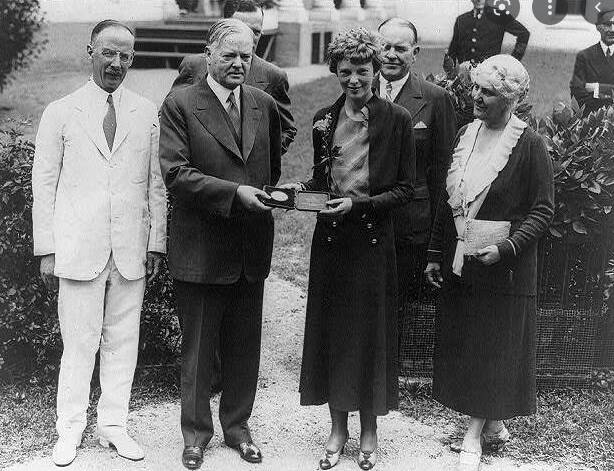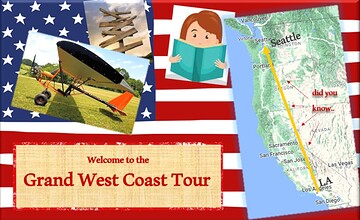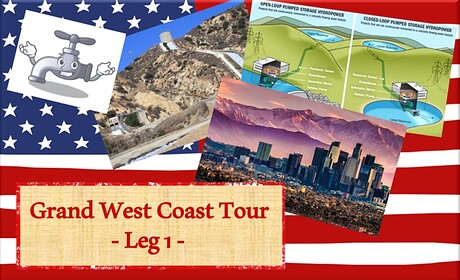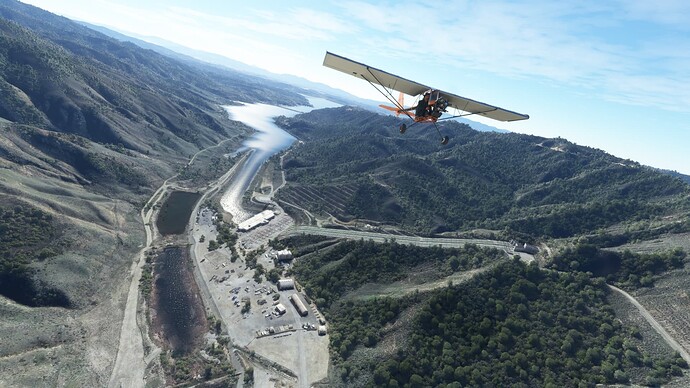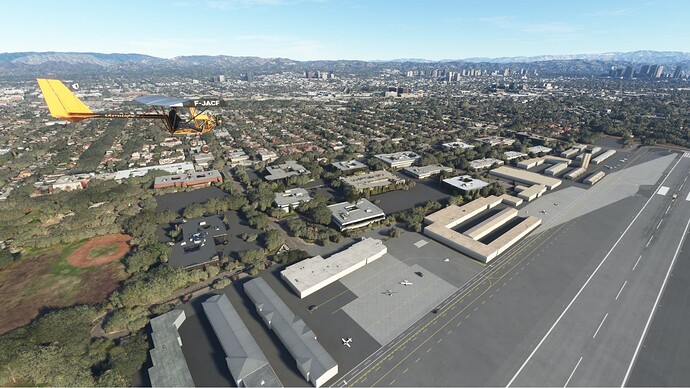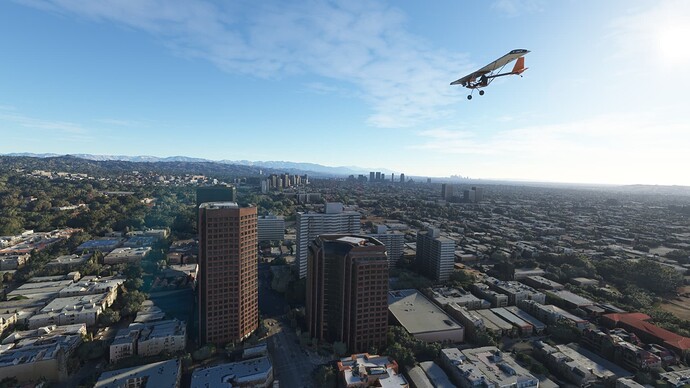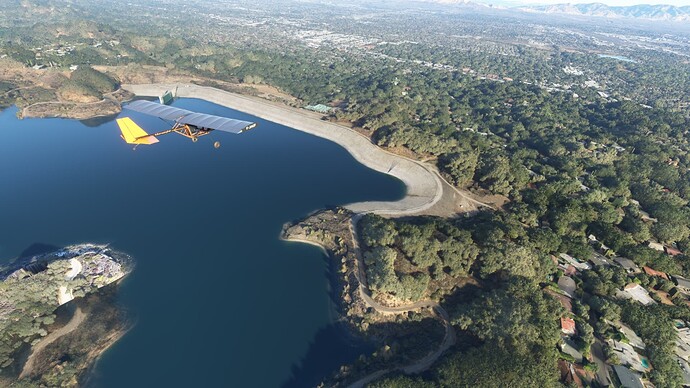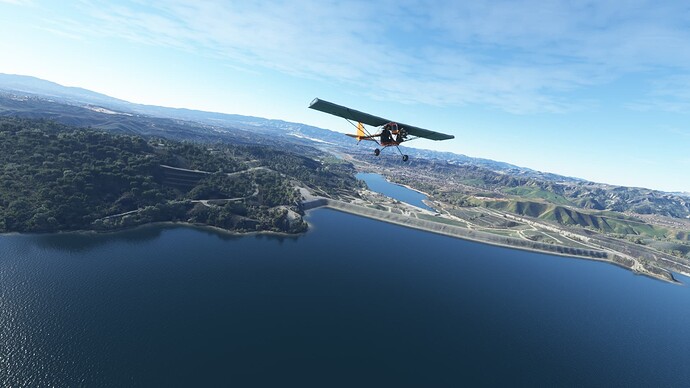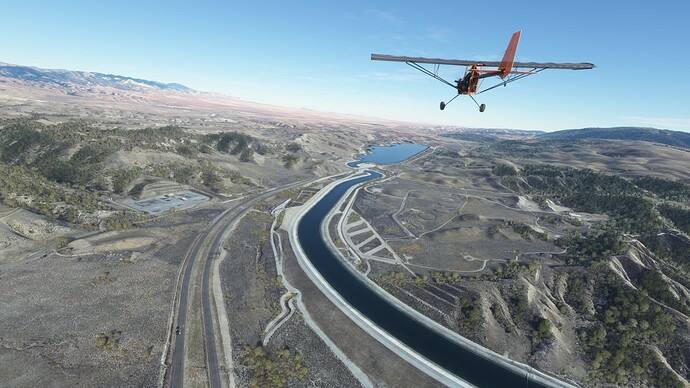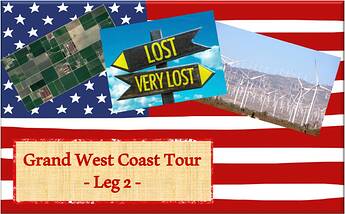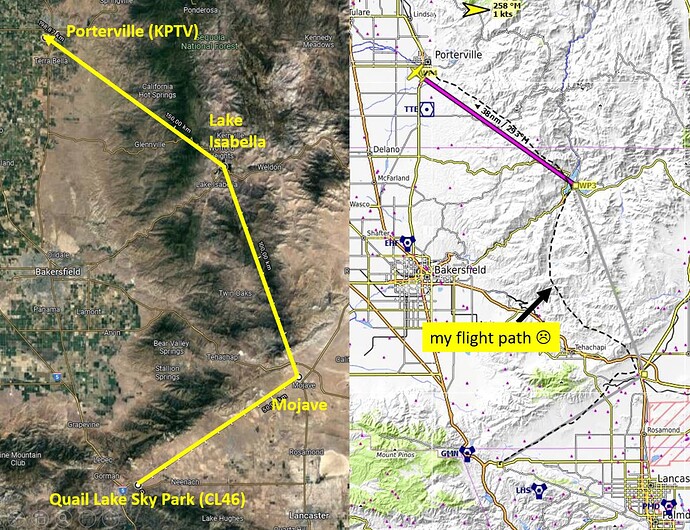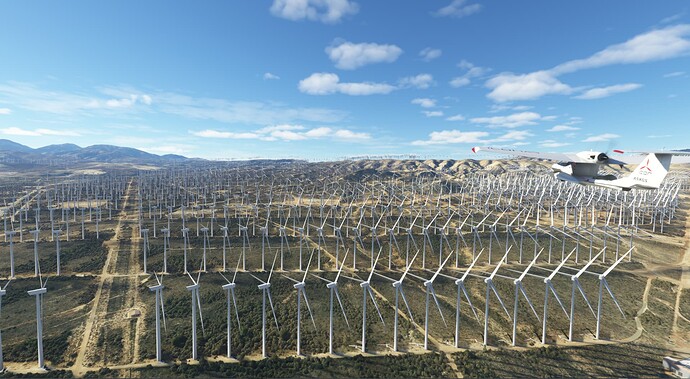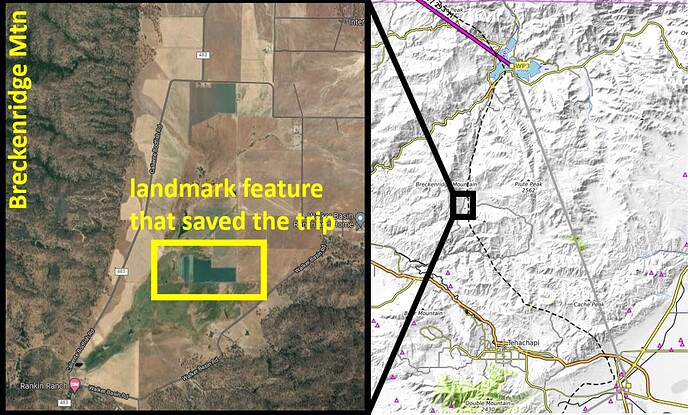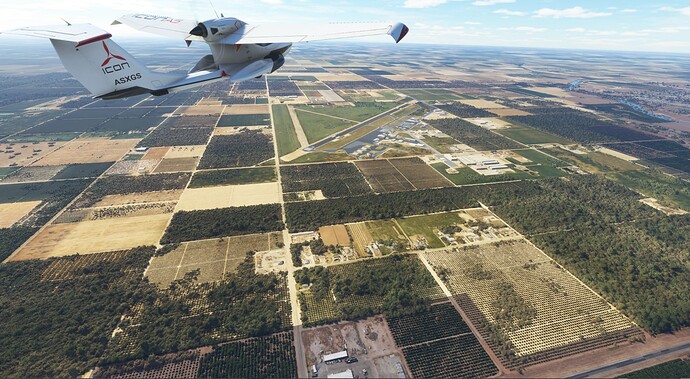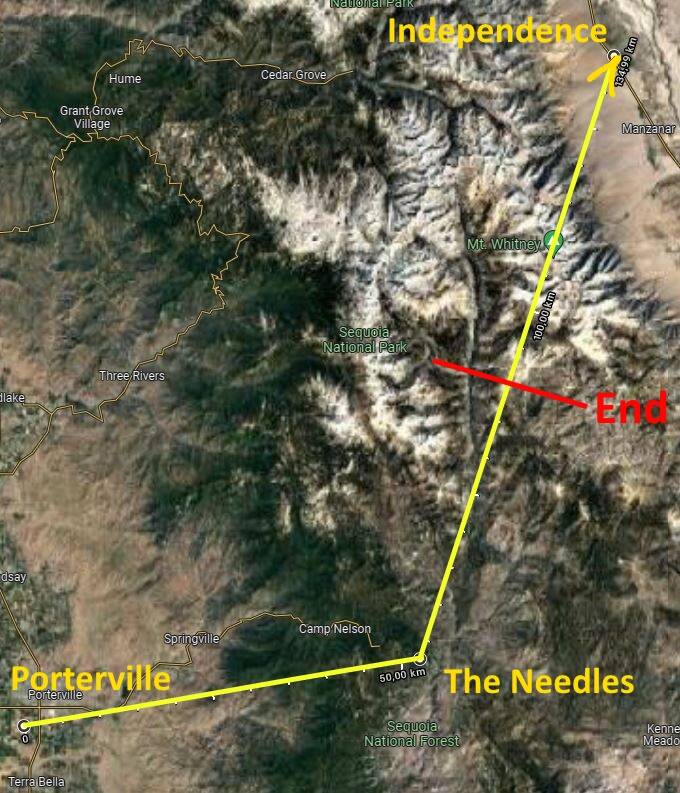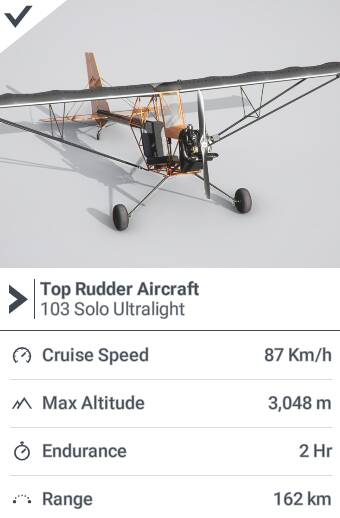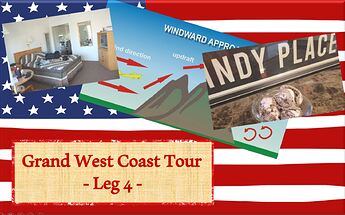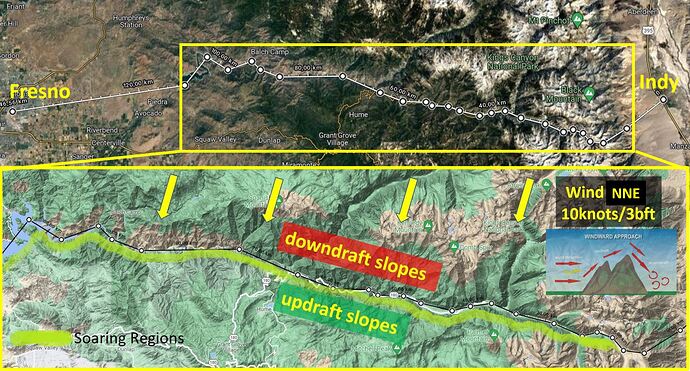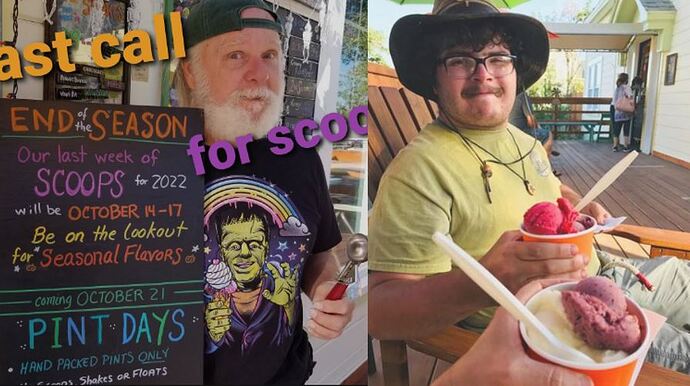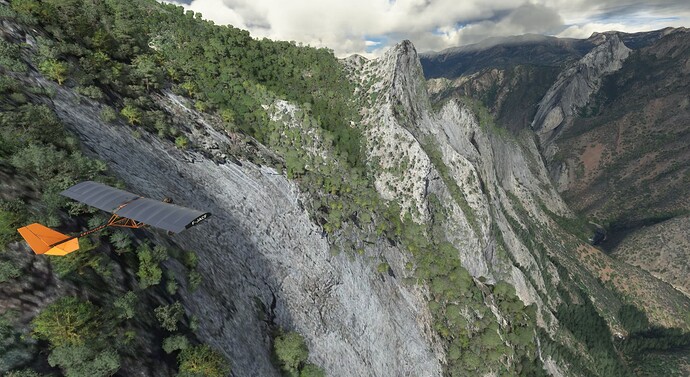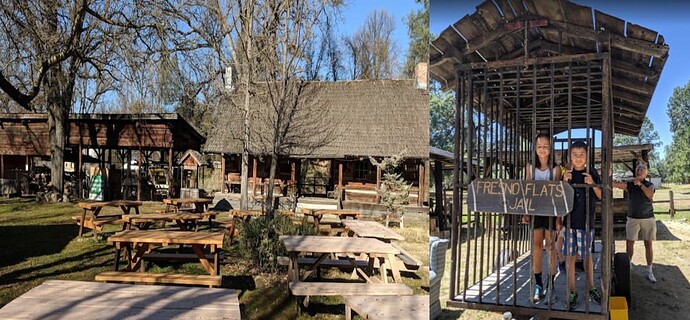Leg 5: In honor of Amelia Earhart!
Fresno Yosemite Intl (KFAT) - Johnston Field (5CL9) - Manzanita Airstrip, Mariposa (6CL4)- Lee Vining (024) (160km/100mi, Top Rudder 103 Solo)
The last leg ended in Fresno, which I quickly left because I wanted to move closer to the edge of the Yosemite high-altitude range before crossing it to the east as soon as the right winds show up. The closest airstrip to Yosemite is Manzanita Airstrip, which I arrived at after two short and eventless hops via Johnston Field. In Manzanita, I needed anythinfg that is west wind for a successful updraft high-altitude crossing and to reach my goal Mono Lake on the other side of the range. The forecast though was telling me that I had few days off with no mentionable west wind in sight, so I decided to move into the next big town Oakhurst.
Leg 5 route and location of the crash during my first attempt right next to Amelia Earhart Peak.
Oakhurst itself had a pretty big misunderstanding for me in place. You see, my financial situation had not exactly improved after my mountain rescue into Independence and the following ice cream rampage there. So I was on the lookout for some free accomodation. Lucky me, I actually found some open park shelters, kind of small farm buildings, and made camp there. Boy, was I lucky, the indoors were actually equiped with just the basic needs, perfect for semi-camping so to say. I made myself comfy and went to sleep over thinking of my upcoming mountain crossing. The next morning I was woken up by a very angry voice though. I opened my eyes and saw a gray haired dude waiving his arms and yelling along the lines of ‘this does it!’ and ‘you will get a proper room!’. Turns out he was the boss of the Fresno Flats Historical Village and turns out I slept in a museum exhibit! I tried to explain my situation and how ice cream ruined me, but he would not have any of it. He called his buddies and they moved me to the cage wagon. I inherited the cage from two children, who explained to me that they mistook the exhibited dairy products for free nitrition, an equally consequential misunderstanding. Long story short, I spent the next two days thinking about my mountain crossing, in a cage! Lucky me, as soon as I was released, west wind showed up and I was ready to fly!
Fresno Flats Historical Village, where a misunderstanding had me jailed for days. The two kids, the previous inhabitants of my cell, fell victim to a similar misunderstanding.
My first attempt at 5kts was unsuccessful and I stalled and crash landed in a small high altitude lake after endless and painful climbing in my Top Rudder. The updrafts just were not strong enough. Back to square one, replacement Top Rudder ordered, second attempt. The second attempt had winds of 10kts and this was enough to lift me over the huge mountains and I arrived at Mono Lake. Before coming to an end though, I want to mention that I looked at the Little NavMap tracker after my first attempt and noticed that I crashed right into Ireland Lake next to Amelia Earhart Peak. Now for the casual reader, this might not sound like much. But for enthusiastic aviators like myself it was the most proud moment. You see, Amelia Earhart was one of the pioneer aviators back when photos were still black and white. She met the president and what not. At the age of almost 40, she attempted to circumvent the globe and disappeared in the Pacific Ocean near Howland Island. Tall stories emerged how the Japanese captured her and so on. But the most plausible cause is that Howland Island just was not mapped properly at this time, so she missed navigation and ran out of fuel, and dropped into the ocean. You can imagine my face, when I realized that I crashed into, not an ocean, but a lake, right next to a peak named after Amelia Earhart.
Amelia Earhart, one of the flight pioneers of her days, with the president. She went missing after crossing the Pacific. I crashed right next to Amelia Earhart Peak in a lake.
